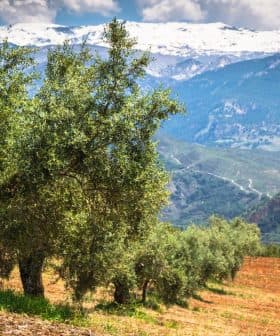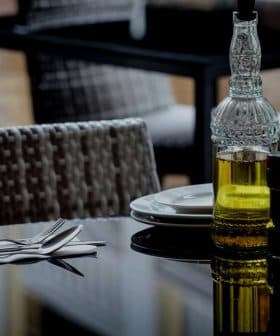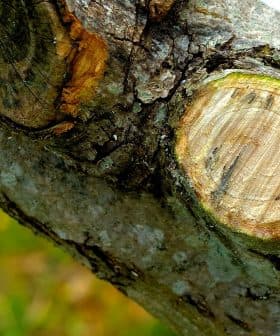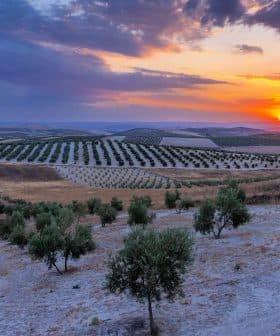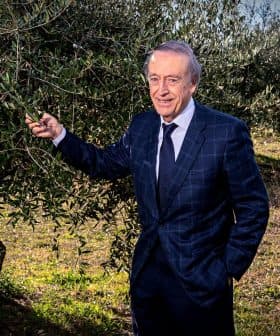Balearic Islands Tighten Restrictions as Xylella Spreads in Mallorca
The strain of Xylella fastidiosa responsible for Olive Quick Decline Syndrome was identified in other plants in Mallorca.
 Ibiza, Spain
Ibiza, Spain The discovery of a new Xylella fastidiosa strain in Mallorca has prompted local authorities to implement a new action plan against the deadly olive tree pathogen, which has already affected various plant species on the Spanish island. Measures include intensifying sampling in affected areas, targeting insect vectors, and prohibiting the movement of host plant material between islands to prevent further spread of the bacteria.
The recent discovery of another Xylella fastidiosa strain in Mallorca has put the deadly olive tree pathogen back in the spotlight.
Local authorities on the Spanish island announced a new action plan against the bacteria, which causes Olive Quick Decline Syndrome and affects dozens of other plant species.
Eradicating the pathogen is impossible, and the future involves learning to live with Xylella fastidiosa.
Although Xylella fastidiosa was first identified on the Balearic Islands in 2016, this is the first time that Mallorcan authorities have identified strain 53, belonging to pauca subspecies.
Xylella fastidiosa pauca is the same strain that has spread in southern Puglia since 2008, killing millions of olive trees.
See Also:Europe’s Evolving Fight Against Xylella FastidiosaThe bacteria were identified in oleander and a few wild olive trees in Sencelles, a municipality in central Mallorca, the largest island of the volcanic archipelago.
The plants were destroyed as required by the Xylella fastidiosa containment protocols of the local administration, which comply with current European Union regulations.
Although the discovery is concerning, it did not surprise the local authorities, considering the impact of the bacteria on the archipelago’s vegetation over the past eight years.
“Different strains of Xylella fastidiosa are found in the Balearic Islands, affecting different host plants,” Andreu Juan Serra, the head of agricultural services at the Balearic government’s general directorate of agriculture, livestock and rural development, told Olive Oil Times.
“As of January 16th, a total of 1,566 positive samples for the Xylella fastidiosa bacterium have been identified in the Balearic Islands,” Juan Serra said.
“Thirty-eight host species for Xylella fastidiosa were found in the infected areas of the Balearic Islands,” he added, listing species including wild cherries, figs, rosemary, vines and olives.
To date, continuous monitoring by local institutions has identified 225 olive trees affected by strains of Xylella fastidiosa on the Spanish archipelago.
One hundred fifty-nine of these were found in Ibiza, 14 in Menorca, and 52 in Mallorca, where olives have grown for thousands of years.
The bacteria was also identified in 596 wild olive trees and 365 almond trees, mostly in Mallorca.
Juan Serra explained that strain 81 affects several plant species in Mallorca, and to date, only strain 80 has been found in Ibiza. “In Menorca, only the subspecies multiplex strain 81 has been detected, affecting various plants,” he added.
“The phytosanitary measures do not differentiate between subspecies, except for the newly identified subspecies strain 53 in Mallorca, which has a specific plan to determine its scope,” Juan Serra said.
The strain 53 containment plan further increases control measures by intensifying sampling in the areas where the strain was detected. The goal is to have the bacteria quickly eliminated.
It also requires officials to identify any subspecies found in samples within a 50-meter radius of the infected plant.
The insect vectors are also targeted. “Treatment against the vector in all its life stages in these areas close to the detections is also established,” Juan Serra said.
Similar procedures have been previously taken in Puglia and have significantly slowed the spread of Xylella fastidiosa.
Balearic Islands authorities are also taking steps to contain the further spreading of the bacteria.
“As indicated by the action plan, established measures include surveying, analyzing and removing all vegetation where the Xylella fastidiosa infection is detected,” Juan Serra said. “Additionally, the movement of host plant material between islands and transferring plant material off the islands is prohibited.”
“Eradicating the pathogen is impossible, and the future involves learning to live with Xylella fastidiosa,” he added.
Many activities are underway to cope with the pathogen. “Resources are being allocated to research how to combat the bacterium, identify the best practices to prevent the vector from transmitting the bacterium, study and promote varieties of olive, almond and grapevine known to show some resistance and study how the plant’s microbiome affects the bacterium,” Juan Serra said.
“This scientific knowledge will help farmers and natural resource managers establish guidelines and measures focused on minimizing the damage caused by the plant pathogenic bacterium,” he added.
Juan Serra said farmers are on the front line of stopping the spread of Xylella fastidiosa on the Balearic Islands.
“Farmers should protect their crops by practicing good agricultural practices, controlling the presence or absence of potential insect vectors of the bacterium, applying treatments against the insect vectors and keeping the ground cover free of vegetation during the breeding season of the vector,” he said.
“In other words, they should apply a series of good agricultural practices that are recommended depending on the time of year,” Juan Serra added. “Farmers should buy plant material from authorized establishments, with plants that have a phytosanitary passport as a guarantee that they are free of pests and diseases.”
According to Miguel Miralles, owner of award-winning producer Treurer on Mallorca, strain 53 is the most significant medium-term danger to the island’s olive groves.
“However, since the first cases of Xylella fastidiosa appeared, farmers and public administrations, as well as citizens in general, have shown a high level of awareness about the importance of the problem,” he told Olive Oil Times.
Xylella fastidiosa
Xylella fastidiosa is a species of Gram-negative bacteria that is notable for causing a variety of plant diseases. It is transmitted to plants via xylem fluid-feeding sap insects, such as leafhoppers and spittlebugs. The bacteria colonize the xylem tissue of a plant, which is responsible for the transport of water and nutrients from the roots to the rest of the plant, and can cause blockages that disrupt water flow, leading to symptoms such as leaf scorch, wilt, dieback, and eventually death in susceptible plant species.
Xylella fastidiosa is a significant agricultural pathogen as it affects a wide range of host plants, including important crops like grapevines (causing Pierce’s disease), citrus trees, coffee plants, almonds, and olives. The impact of this bacterium is a matter of serious concern because it can lead to substantial economic losses in agriculture and horticulture, as well as to the natural environment when native plants are affected.
Managing and controlling the spread of Xylella fastidiosa is challenging due to its wide host range and the diversity of insect vectors that can transmit the pathogen. Measures include controlling the insect vectors, removing and destroying infected plants, and implementing plant quarantine protocols to prevent the spread of the bacteria to new areas.
“With the emergence of strain 53, controls have been increased, and we hope that its expansion can be halted,” he added.
Miralles highlighted how targeted action on different levels is critical to cope with the pathogen.
“Adopting preventive measures is essential, as it is currently the best mechanism to halt its spread,” he said. “Among these measures, it is crucial to develop good practices in soil management, fertilization, pruning and irrigation. Measures to fight against vectors also must be implemented.”
“All these measures must be generalized, and the best way to do this is through properly training farmers,” Miralles added.” In turn, public administrations must invest more resources to discover new and better ways to fight the bacteria.”
Besides farmers, local authorities are also trying to raise awareness among residents, mostly about behaviors that could trigger further outbreaks.
“Training and information dissemination are provided to raise awareness about the risks of bringing in plants from different places, as they can be carriers of pests and diseases,” Juan Serra said.
“Signage in multiple languages is displayed at airports and ports to alert both the population and tourists,” he added.
Share this article




